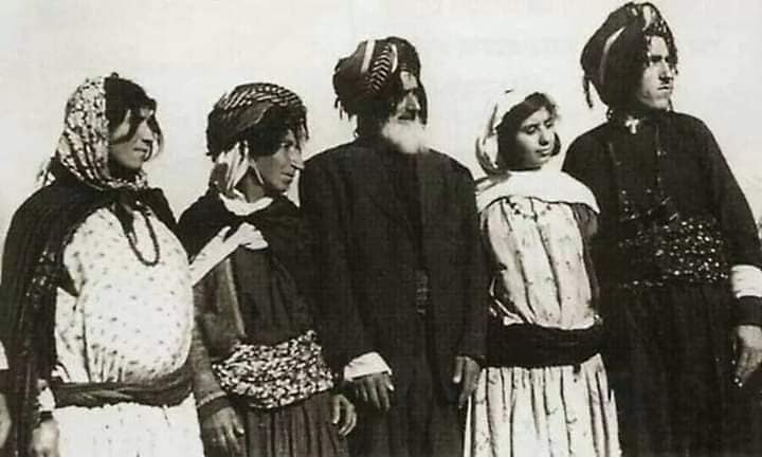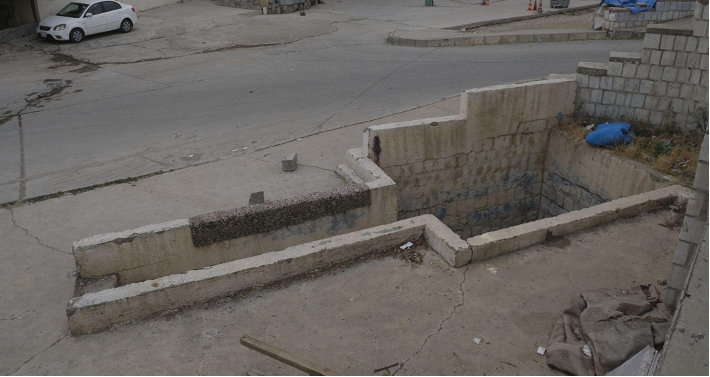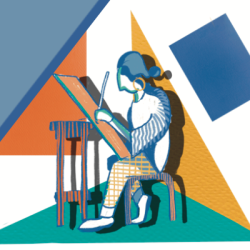Exploring Artistic Horizons: TPH's Inaugural Digital Art Session

Julakan, the massive ancient neighborhood with a lost history
By: Bzhwen and Niga

Julakan neighbourhood or ‘Jews’ when translated from Kurdish, has everything but the namesake. This ancient neighbourhood in the heart of the city of Sulaymaniyah has no Jews residing in it whatsoever. Taking a walk through the neighbourhood at different times of the day gives the same feeling and tells the same stories of a lost history that no one remembers.
The streets themselves have been designed like any old neighbourhood from Sulaymaniyah following the zigzags and narrow paths that the vernacular way of architecture allowed. Each house and wall and window is made for the reason it was viable while building. However, from what remains, one could conclude how these more intricate design choices have been made, because of unique technics used in laying outer layers of bricks and making patterns with, laying flat square bricks, and shaped pillars at the end of the walls. This type of bricklaying is rarely seen in the houses that have survived today.
The remains of these architectural and design tastes seem to contrast with the population residing in the neighbourhood today. They seem and are known for working in low-income jobs and coming short-handed financially. Some are refugees who could make it out of the camps to live in a house. And most of the neighbourhood didn’t own cars. The contrast is also visible in the buildings that have been renovated since the initiation of Operation Ezra and Nehemiah. The current residents avoided confrontation and seemed to be shy talking about the history of the neighborhood, they didn’t feel comfortable being approached by strangers and weren’t so keen on the topic. We felt unwelcomed about our presence and the presence of our questions.
We turned to a group of kids playing around, we asked them if they knew of any Jews residing in the neighbourhood. They were confused, the only thing one of the kids knew about Jews was that they had found a pot of Jewish gold under one of the houses that were torn down.
Remainings of old culture in ruins of another one
On Baban Street at the end facing outwards of the city you enter the street from the roundabout and take a right into Julakan. You will enter upon a spacious opening on your left and in the corner of the turn, there lays a ruins of a Mikveh. When we asked the neighbors, they thought it was a mere water source that the older residence used especially since ‘the water has tested positive for drinking’. Unfortunately, it seemed that among other things the use of a Mikveh had been lost too. A Mikveh, traditionally is used by Jewish women who end their menstruation cycle. They use the freshwater by submerging through it and cleansing themselves to mark the end of their cycles. Even old stories of the Julakan think of the Mikveh as a water source that ‘has been used for everything

Up the road on the second lane on the left, we encountered a banner for a real estate company selling a piece of land that is said to be a synagogue. We called the numbers provided in hopes the owner might have some history of the place. But unfortunately, the real estate company told us that the owner is ill, and is only talking to potential buyers. The land was owned, so somehow it is connected to its original owners. Because almost no other land is sold as ownership only through real estate contracts.
Just up the alley, there is a mosque, it is ironically called the mosque of Julakan. This mosque marks the second synagogue of the Jews in the area. It was built in 1955 which is awfully close to the end of relocating the Jews to Israel some sources state that there were Jews until 1951 in the neighborhood. In the mosque, there are two graves marked for unknown people. The graves are said to be from two Muslim Faqih who are young Muslim scholars. Both of them were put in the line of fire to be executed in 1973, one survived and then committed suicide as they became mentally unstable because of the situation they were in. An interesting story as there are many more, but unfortunately not much about the original residents of the neighborhood.

A bit of history:
When the city of Sulaimaniyah was built, there were only seven neighborhoods. Among these seven was Julakan. From the stories about the people that used to live there. The Kurdish Jews were the building blocks of the city and its community from the very beginning, They brought capital and managed to do good trade. They were some of the best-skilled laborers in the Bazar. To this day Sulaymaniyah suffers from the lack of coppersmiths because the craft was dominated by Jews. They had a great place in the community, they had a voice to share about their concerns. They were in connection with power authority because of their roots that span thousands of years in the region all over.
However, as it is mentioned in the old stories, there was a lot of misbehaving towards the Jews. It is said that their houses were relocated to today’s Julakan area because Muslims were upset that the shadows of their building might cover their own and thus be cursed to do their Islamic worship in their shadow. From this stance, they were frowned upon and looked down on, their wealth and business were always questioned. Muslim children were taught to keep away and to distrust them. They were alienated simply based on their religion. The current shortcomings in the Kurdish craft market might be directly linked to the margin between the communities.
Fortunately, there are Novels about their experience in Kurdish by a writer who is a descendant of a Jewish family. The Kurdish Jews were Kurdish, they were in pain for all that we have lost through wars and politics. Their feelings aligned with that of any Kurdish person looking at a map. However, all of these were subsided and alienated by the Muslim Majority during that time.
After the initiation of the Aliyah, which is the migration of Jews to Israel. Many Jews were more than ready to leave all that had been connected to their identity for all the suffering they had undergone. Right after World War II the Jewish community in Iraq suffered drastically. The political authorities had started mass propaganda against the Jewish population all across Iraq. In a bloody turn of events, nearly 180 Jewish people were killed. Although there are no records of the events that turned out in Sulaymaniyah. There are stories of attacks and mass murders that have harassed the Jewish population out of Julakan. This was both from the community of people and the ruler of Sulaymaniyah, Sheikh Mahmud. These people still felt true to their Kurdish cause, they had businesses and positions, yet they felt the to move out. Sulaimaniyah’s Julakan might have had it a bit worse. As stories for Halabja’s Julakan are entirely different.
While stories and clues of a hostile environment in Julakan of Sulaymaniyah go around. People from Halabja accompanied their neighbors to Baghdad to help un the Aliyah until they were airlifted to Israel with a heavy heart. In Sulaymaniyah, the houses are pillaged and although no one truly owns the houses, they have been in trade through real estate contracts ever since then. Some have been renovated during the past 70 years, some are torn down for car parking garages. The manuplicity doesn’t seem to be able to keep up with the vandalism of the area.
It is wonder-worthy to think about the true feelings of the Kurdish Jews, as through the stories they have always been called out for their looks and beliefs to the rest of the city’s people. Another telling of the Jews that traded in front of the Grand Mosque and even then ‘children would surround them and ask about their beards’. These perspectives towards their place in the city can mean that they have never felt entirely welcome.
In another statement from a Jew who wandered the street as a seller of trinkets. IT is quoted “Come and buy from me so I can buy bullets to put into the heart of your youth” This story was told by a lady born in Sershaqam, she tells this from her father’s retelling of the story. The context and state of this statement is not clear.
Conclusion
Julakan’s name is but a name at this point. Although everything points to the hurt and suffering caused by the Muslim community towards the Jews from the beginning of the city. I believe what was most concerning was the lack of interest in investing in your neighbor's knowledge. The lack of Memories, words, and understanding of the Jewish community in Sulaimaniyah. The lack of official documents discussing their state of living and the lack of people to tell the stories from the neighborhood feel as if this ancient part of this grand city almost never existed. And although there is no fundamental contradiction towards their end with violence there is no real way to hear it from Jews that lived here, because after 70 years from Aliyah only in the last decade there was an interest in the Jewish history in Sulaimaniyah. All things aside the single state of mind that allows you to restart a community is the heart of an older one just a year after it was forsaken. Gives away that there was no real consideration or regard toward the feelings of their Jewish neighbors. And although the synagogues were taken over and the symbols were all ruined, No one knew what a Mikveh was.
